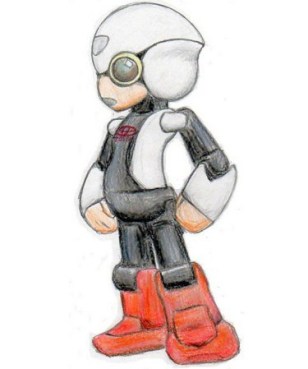 Japanese astronaut Koichi Wakata, set to become the first Japanese commander of the International Space Station (ISS) when he returns to space next year, will have a special buddy called Kibo to keep him company, it’s been reported.
Japanese astronaut Koichi Wakata, set to become the first Japanese commander of the International Space Station (ISS) when he returns to space next year, will have a special buddy called Kibo to keep him company, it’s been reported.
No, Kibo isn’t the name of one of Wakata’s fellow astronauts, nor is it a pet hamster or soft toy. Kibo is, in fact, a humanoid robot, the result of a joint research project conducted by the University of Tokyo’s Research Center for Advanced Science and Technology (RCAST), Robo Garage of Kyoto University, ad firm Dentsu and Toyota.
Though still being built (a sketch of Kibo was released last week and is shown here), the robot is expected to be up and running – quite literally, we assume – in February 2013, in time for its journey in the summer to the Japanese ‘Kibo’Experiment Module aboard the ISS.
With a height of just 34 centimeters and a weight of only 1 kilo, Kibo could be one of the few visitors to the ISS that finds the cramped conditions of the ISS of little hindrance.
The robot’s features include “voice recognition, natural language processing, voice synthesis, telecommunications functions, communication actions, facial recognition camera and a recording camera,” Japan’s Asahi newspaper reported.
Kibo’s hardware is being created by RCAST and Robot Garage, while Dentsu is taking care of its conversational features. Toyota, meanwhile, is developing Kibo’s voice recognition and natural language processing functions.
While up in space, the diminutive robot will spend time transmitting information from the space station back to Mission Control, and will also post messages on Twitter to what’ll no doubt be a huge number of followers.
It’ll also engage in conversation with Wakata when he arrives at the ISS later in the year. Their space-based chat will form part of what is being described as “the world’s first conversation experiment held in outer space between a person and a robot.” How useful such an experiment will be for us mere mortals back on Earth, or indeed for the future of mankind, remains to be seen.
According to Kibo’s website, the robot’s mission is to “help solve the problems brought about by a society that has become more individualized and less communicative.”
A copy of Kibo will be made for public show back on Earth, and will also serve as a back-up for the space-based Kibo – presumably in case it fails to hit it off with the astronauts on the ISS and requests an early return to Earth.
Editors' Recommendations
- The latest wild idea for space exploration? Robots made from hunks of ice
- All traditions are scrapped: Keeping coronavirus off the ISS
- The next challenge for getting to Mars: What happens to the human body in space
- ISS gets a new research platform, Bartolomeo, attached to its exterior
- SpaceX is carrying these biotechnology experiments to the ISS this weekend


